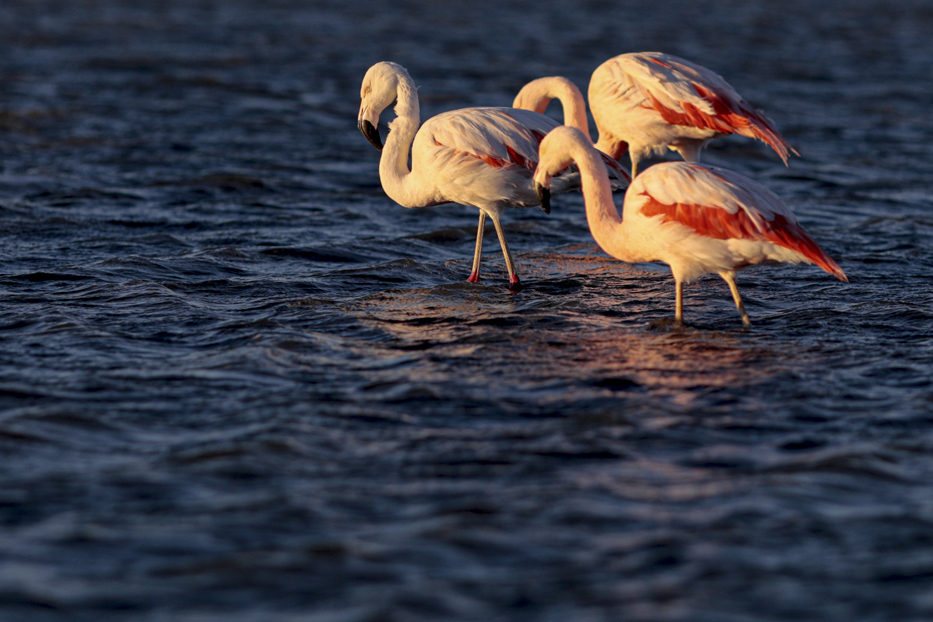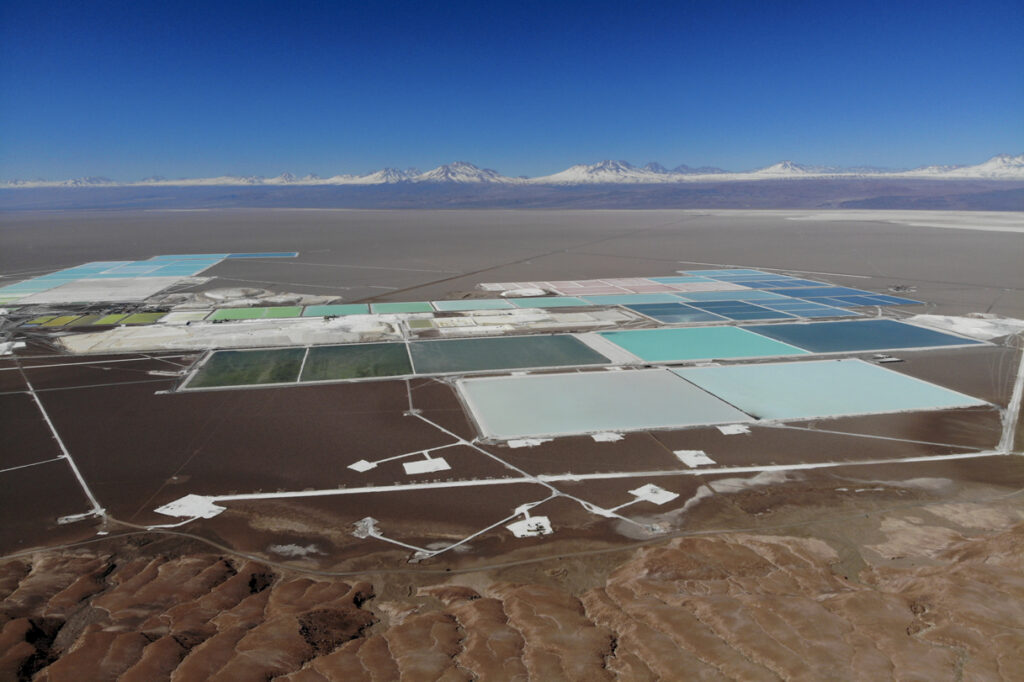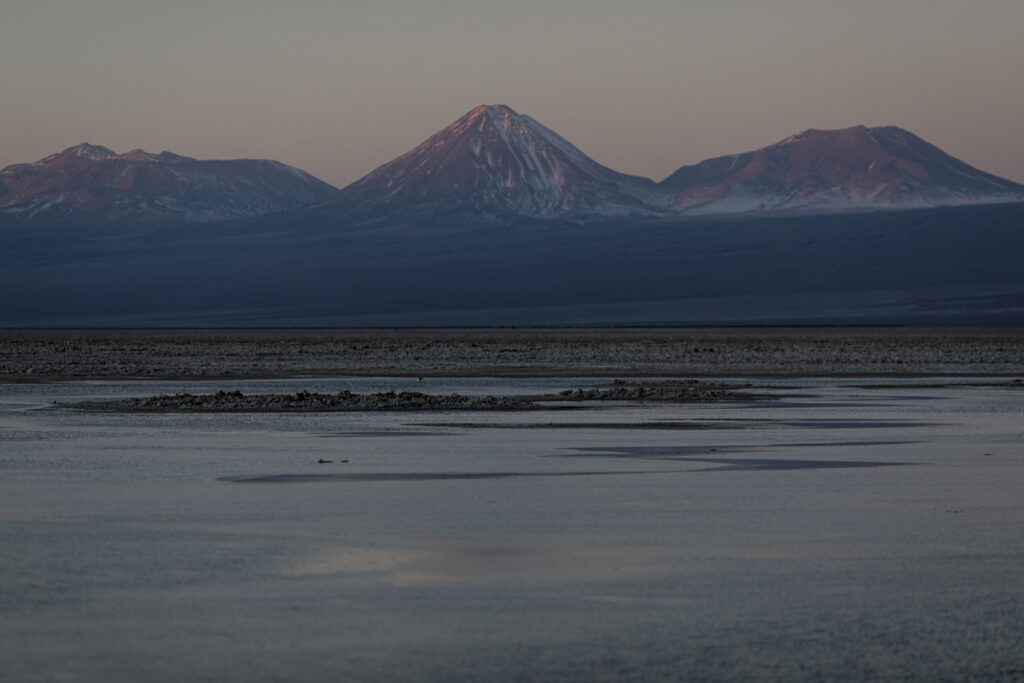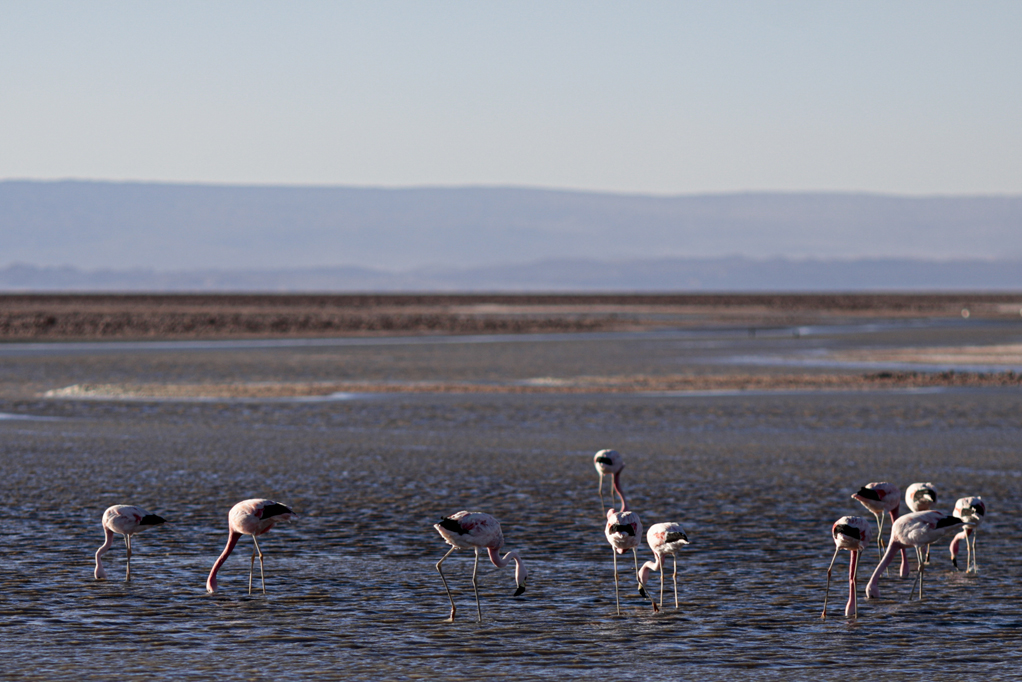
While the Atacama Desert experiences water scarcity, lithium companies pump billions of liters of brine from the area’s subsoil.
Nikolaj Houmann Mortensen i Mie Obbekær/ @DanWatchDK
In the middle of the world’s driest desert, an enormous area is covered by hundreds of turquoise pools, some as big as 20 football fields. The pools are filled with saliferous brine that has been pumped up from ancient reservoirs in the desert’s subsurface. The brine contains lithium carbonate that can be converted into a light metal, lithium, which is the core of the rechargeable lithium-ion batteries that virtually all computers, phones and electric vehicles use today.

Billions of liters of brine are being pumped up from the substratum of the desert. The two mining companies operating in the Atacama, the Chilean firm SQM and their US counterpart Albemarle, pump up nearly 2,000 liters of brine per second. That’s the equivalent of pumping up 1,209 million liters of saltwater per week, or more than 63 billion liters per year. In addition, the companies use some quantities of freshwater.
A WATER-INTENSIVE INDUSTRY
When mining companies extract lithium, they pump up the brine and allow the desert’s strong solar radiation to evaporate up to 95 percent of the water. The lithium is then separated from the residual product via a chemical process and converted into the compounds that are used in rechargeable batteries.
Although the brine is not suitable for human consumption, its absence can have a major impact on the environment and water resources of the Atacama Desert, as the water that evaporates exits the desert’s water cycle. And that is a significant amount of water from an area where local residents are already suffering from water shortages.
There is, however, considerable disagreement on exactly how much of the desert’s water is used to produce the lithium inside a computer, a telephone or an electric car.
Scientists, research studies and companies that Danwatch has consulted present estimates ranging from 400 to 2 million liters of water per kilo of lithium.

The US mining company Albemarle submitted the lowest figure: 400 liters of water per kilo of lithium. However, the company will not tell Danwatch how it reached that number and thus how much water it estimates evaporates in the process.
On the other hand, Danwatch has been unable to obtain the calculations behind the estimates that have appeared in several reports that millions of liters of water are used to produce a single kilo of lithium. While some researchers have estimated that figure to be more accurate than Albemarle’s 400 liters, others say Albemarle’s sounds more realistic.
SQM has not responded to Danwatch’s requests for information about how much brine they use to produce lithium.
POLLUTING THE DRINKING WATER
According to figures from the Chilean government’s Committee of Non-Metallic Mining, during the period 2000-2015, the amount of water that was extracted from the Atacama was 21 percent higher than the natural flow of water to the area via rain and meltwater.
However, the mining companies maintain that extraction from the brine reservoirs will not affect the area’s freshwater resources.
“The salty, mineral rich brine is not suitable for agricultural or potable use, and we work very closely with the communities to ensure that we operate in a sustainable way,” wrote Hailey Quinn, Albemarle’s External Communications Manager, in an email to Danwatch.
But according to several researchers that Danwatch has consulted, the subsurface brine deposits exist in relation to other water resources in the Atacama — including the freshwater sources that the desert’s indigenous communities derive their water from. This means that the total amount of water will decrease concurrently with the brine extraction — and that, in the long run, freshwater risks being mixed with saliferous brine and thus becoming undrinkable.
“When you pump up the brine, you simultaneously force freshwater into motion, which ends up mixing with the brine. The freshwater then gets an increasing salinity, which has consequences for the local residents,” says Ingrid Garcés, who researches the Atacama salt flat as a professor at the Department of Chemical Engineering and Mineral Processing at the Chilean University of Antofagasta.

ALMOST NO DATA
According to Stephan Lutter, a professor at the Institute for Ecological Economics at the Vienna University of Economics and Business, who has researched water-intensive mining, this is a general problem with “water-mining”. He points out that similar industries often affect the water resources of other reservoirs they do not pump directly from, as the underground water deposits are connected.
“It affects both the local population and the environment,” Stephan Lutter says.
Earlier this year, researchers at Arizona State University’s School of Sustainability published the most comprehensive independent study on the issue so far. It identified a clear negative correlation between lithium extraction and the vegetation and soil moisture of the Atacama.
Otherwise, though, there is no evidence as to whether freshwater and brine are mixing beneath the Atacama’s subsoil. And this lack of information is a major part of the problem with lithium extraction, according to Ingrid Garcés and Stephan Lutter.
“Especially with lithium, there is almost no data, even though it is mined from the driest desert on Earth,” says Stephan Lutter.

